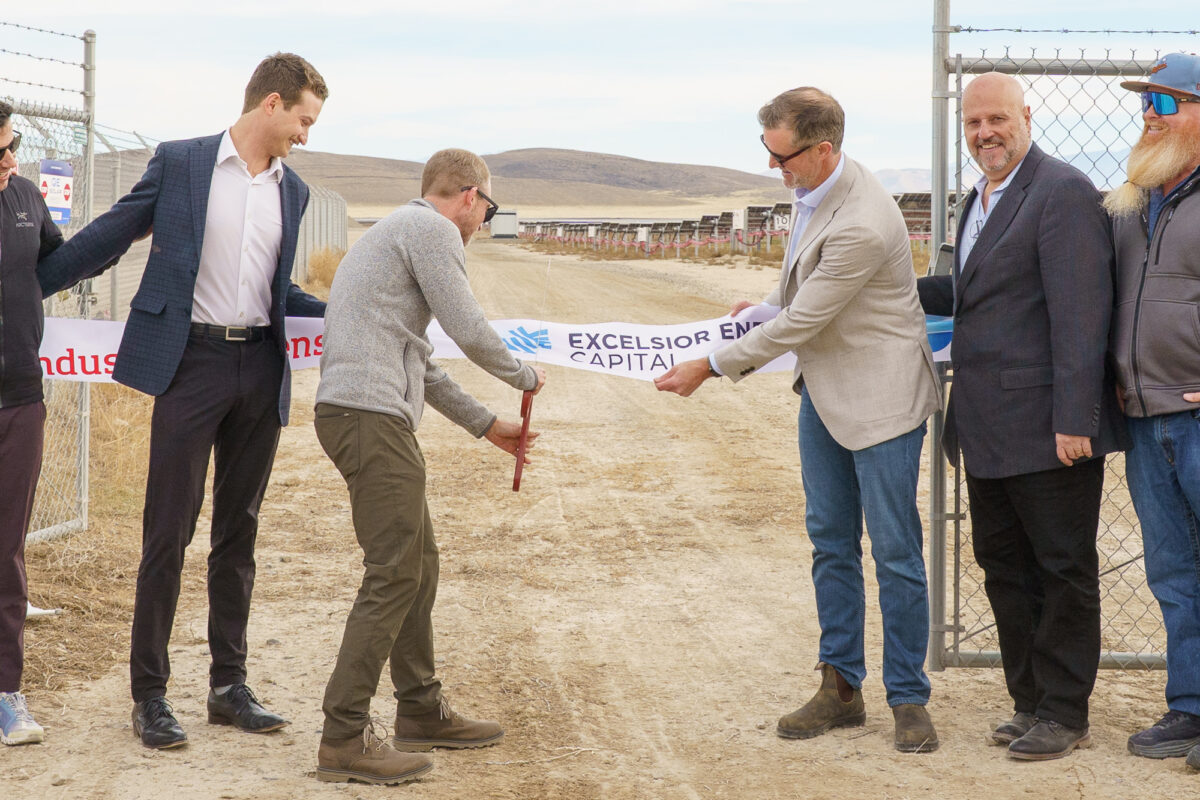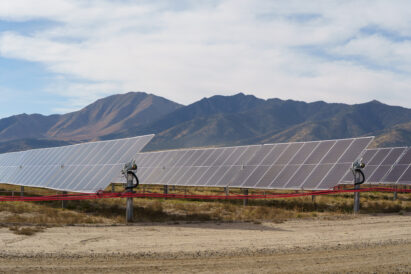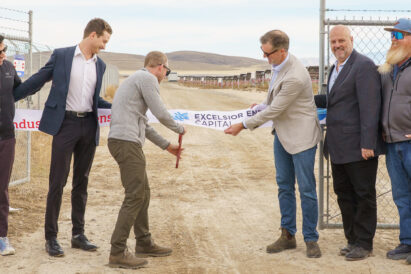Rays of power: Utah’s largest solar plant becomes operational, set to power Eagle Mountain data center
- Excelsior Energy Capital’s Faraday Solar project is pictured in Utah County.
- Excelsior Energy Capital cuts the ribbon on the Faraday Solar project on Wednesday, Nov. 5, 2025, in Utah County.
A massive solar plant recently opened near Eagle Mountain in Utah County and will power a data center of one of the biggest technology companies in the world.
Excelsior Energy Capital’s Faraday Solar project reached operational readiness on Sept. 30 and will provide renewable energy to Meta’s Eagle Mountain data center through a 20-year power purchase agreement with Rocky Mountain Power.
The facility is the largest solar plant in Utah and one of the largest in the country, approximately the size of Central Park, with 1.2 million solar panels producing 685.3 megawatts (MWdc).
Excelsior acquired the project from its original developers, Parasol and Clenera, in 2023. Christopher Frantz, a partner at Excelsior, said it was an attractive location because it was a high solar resource area that had demand from Rocky Mountain Power and received support from local stakeholders.
“It certainly needs to be in an area where the local government is supportive of these types of projects and is willing to give the permits needed to build it,” Frantz said. “The landowner that the project is built on, of course, had to be very supportive in order to lease us the land to build it.”
The electricity generated to the facility will not go toward powering local homes. However, Frantz believes the plant will be an economic stimulant through hiring local employees and property tax payments.
According to county administrator Ezra Nair, Alpine School District will receive $900,000 annually in property taxes from the facility, while the county will receive $136,000, including $32,000 in administrative fees. In addition, $265,000 will go toward housing infrastructure.
Frantz added that the plant will produce clean, reliable power and will not impact the land.
“There’s no emissions; it doesn’t pollute the land,” he said. “On most of the land, we’re not building foundations or anything like that. So after the facility kind of finishes its useful life, it’s fairly easy to remove it,” he said.
The solar plant’s arrival locally reflects a global trend. According to the International Energy Agency, solar panel deployment tripled from 2018 to 2023, and the technology is expected to account for 80% of the growth in global renewable capacity between 2024 and 2030 and become the largest renewable energy source by 2029.
Frantz said the largest amount of growth in the energy sector is coming from solar based on megawatts of power capacity added each year in the U.S. and abroad.
“When you have something that is clean, reliable and the lowest cost, it’s certainly going to experience a lot of growth,” he said. “So I think we’re going to see a lot more of it in years to come. We’re certainly very actively building several other projects right now, looking at one project that may actually be quite a bit bigger than the Faraday project, too.”
The Faraday project became operational in two years after construction started. Frantz said for several months, the facility was receiving 20 semitrucks a day full of solar panels to be installed. The facility was built by RES and included a partnership with Energy Project Solutions.
“It’s a huge facility, absolutely one of the biggest in the country, but I think we had a very reasonable schedule to get it done,” Frantz said.
After the 20-year contract with Rocky Mountain expires, the door remains open to remove the solar panels from the land or renew an agreement with new solar panels, according to Frantz.
He said solar panels degrade by about a half a percent annually and will become less efficient to use as the years go on, and that technology continues to get better.
“In 40 years, you’ll probably be able to install a solar panel that is substantially more efficient at converting solar energy into electric power than the ones we installed a few months ago,” he said. “So it’s certainly something, speculating 20 or 40 years from now that we would look to do. But it just depends on what the world’s like.”






